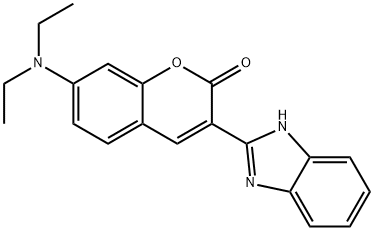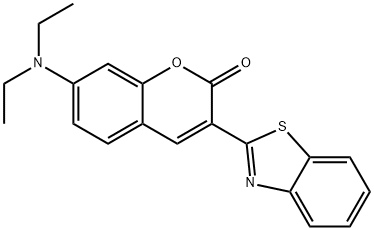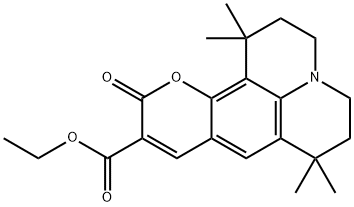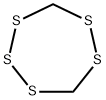Coumarin , AR,98% , 91-64-5
Synonym(s):
1,2-Benzopyrone;1-Benzopyran-2-one;2H-Chromen-2-one;5,6-Benzo-2-pyrone;Coumarin
CAS NO.:91-64-5
Empirical Formula: C9H6O2
Molecular Weight: 146.14
MDL number: MFCD00006850
EINECS: 202-086-7
| Pack Size | Price | Stock | Quantity |
| 25g | RMB31.20 | In Stock |
|
| 100G | RMB37.60 | In Stock |
|
| 500G | RMB127.20 | In Stock |
|
| 2.5KG | RMB527.20 | In Stock |
|
| others | Enquire |
PRODUCT Properties
| Melting point: | 68-73 °C (lit.) |
| Boiling point: | 298 °C (lit.) |
| Density | 0.935 |
| vapor pressure | 0.01 mm Hg ( 47 °C) |
| refractive index | 1.5100 (estimate) |
| Flash point: | 162 °C |
| storage temp. | Store below +30°C. |
| solubility | 1.7g/l |
| form | Crystals or Crystalline Powder |
| color | White |
| PH Range | Non' uorescence (9.5) to light green ' uorescence (10.5) |
| Odor | at 10.00 % in dipropylene glycol. sweet hay tonka new mown hay |
| Odor Type | tonka |
| biological source | synthetic |
| Water Solubility | 1.7 g/L (20 ºC) |
| λmax | 275nm |
| Merck | 14,2562 |
| BRN | 383644 |
| Major Application | color filter, organic electroluminescent devices, liquid crystal displays, field emission displays, inks, nickel plating, detergents, deodorant for shoes, petroleum products, cigarettes, personal care products, cosmetics, sunscreen cream, perfumes, nucleic acid sequencing, antiinflammatory agent, treatment of cancer, neurotransmission disorders, bleeding disorders, cerebrovascular disease, thrombosis, hemorrhoids, rheumatic disease, arthritic disease, epilepsy, vaginitis, painkiller, teeth whitening agent, skin whitening agent, wound healing promoter |
| InChIKey | ZYGHJZDHTFUPRJ-UHFFFAOYSA-N |
| LogP | 1.39 at 25℃ |
| CAS DataBase Reference | 91-64-5(CAS DataBase Reference) |
| NIST Chemistry Reference | Coumarin(91-64-5) |
| IARC | 3 (Vol. Sup 7, 77) 2000 |
| EPA Substance Registry System | Coumarin (91-64-5) |
Description and Uses
Coumarin is a naturally occurring Benzopyrone compound. It is found in a large number of plants belonging to many different families including tonka beans, woodruff, lavender oil, cassia, melilot (sweet clover), and other plants. It is found in edible plants such as strawberries, cinnamon, peppermint, green tea, carrots, and celery, as well as in partially fermented tea, red wine, beer, and other foodstuffs. Concentrations range from 87 000 ppm in cassia and 40 000 ppm in cinnamon to 20 ppm in peppermint and 5 ppb in tangerines.
antineoplastic, antiinflammatory, antihyperglycaemic
Safety
| Symbol(GHS) |  GHS06 |
| Signal word | Danger |
| Hazard statements | H301+H311-H317 |
| Precautionary statements | P261-P264-P270-P280-P301+P310-P302+P352+P312 |
| Hazard Codes | Xn |
| Risk Statements | 22-40-36/37/38-20/21/22-43 |
| Safety Statements | 36-36/37-26 |
| RIDADR | UN 2811 6.1/PG 3 |
| WGK Germany | 1 |
| RTECS | GN4200000 |
| TSCA | Yes |
| HazardClass | 6.1 |
| PackingGroup | III |
| HS Code | 29322010 |
| Hazardous Substances Data | 91-64-5(Hazardous Substances Data) |
| Toxicity | LD50 orally in rats, guinea pigs: 680, 202 mg/kg (Jenner) |





